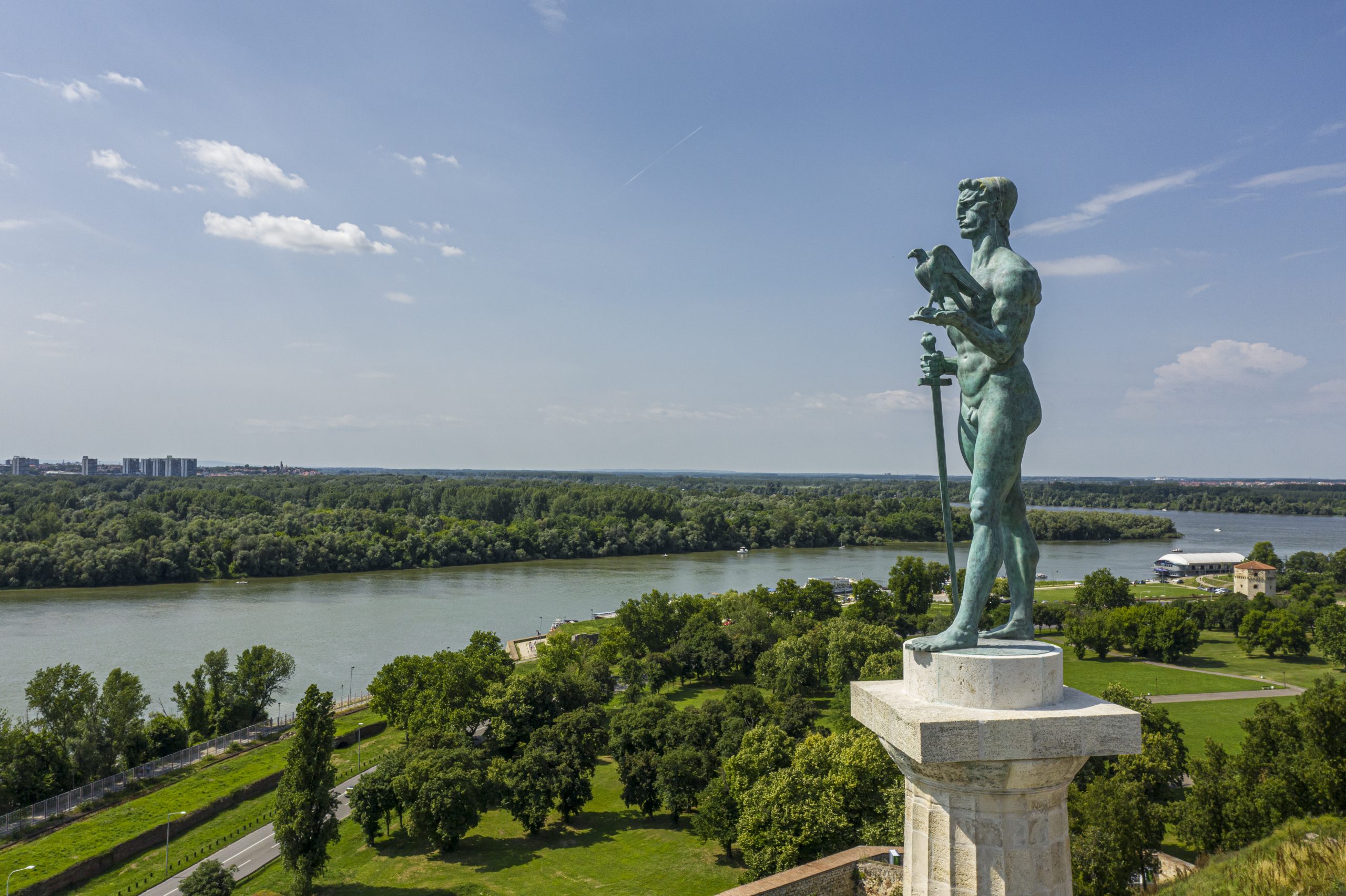The ‘Victor’ monument is certainly the most recognisable symbol of Belgrade. It was created in the years before the First World War, but its formation took an unusually long time. The monument honouring the victory of the Serbian army in the Balkan wars was originally conceived as a fountain, which was to be placed in the very centre of Belgrade, on Terazije. The task was entrusted to one of the most important artists from the beginning of the 20th century, the sculptor Ivan Mestrovic. By the beginning of the First World War, he had cast the central part of the fountain in the form of a naked male figure holding a sword in his right hand (a symbol of war) and a falcon in his left hand (a symbol of peace) — the Victor.
When the war started, the figure was stored in a house in Senjak, thanks to which it remained undamaged during the bombing. After the end of the war, the idea of a fountain was abandoned and the sculpture of the Victor was placed on a high pedestal in the form of a Doric column with a total height of 14 metres. The original idea of erecting the monument in the centre of the city was also abandoned — some people reacted badly to the idea of a naked man being in a central location so a new place was chosen, far from the city centre. Thus, the monument was placed on the highest spot of the Belgrade Fortress — on the top of the ridge above the confluence of the Sava and the Danube. The sculpture faces the Sava and the then newly liberated parts of the Kingdom of Yugoslavia, symbolising the victory in the First World War. Under the new name ‘The Harbinger of Victory’, the monument was ceremoniously unveiled in 1928, during the tenth anniversary celebration of the breakthrough of the Thessaloniki front.
At the end of 2019/beginning of 2020, the monument underwent complete restoration. The ‘Victor’ monument was proclaimed a cultural heritage property in 1992.









